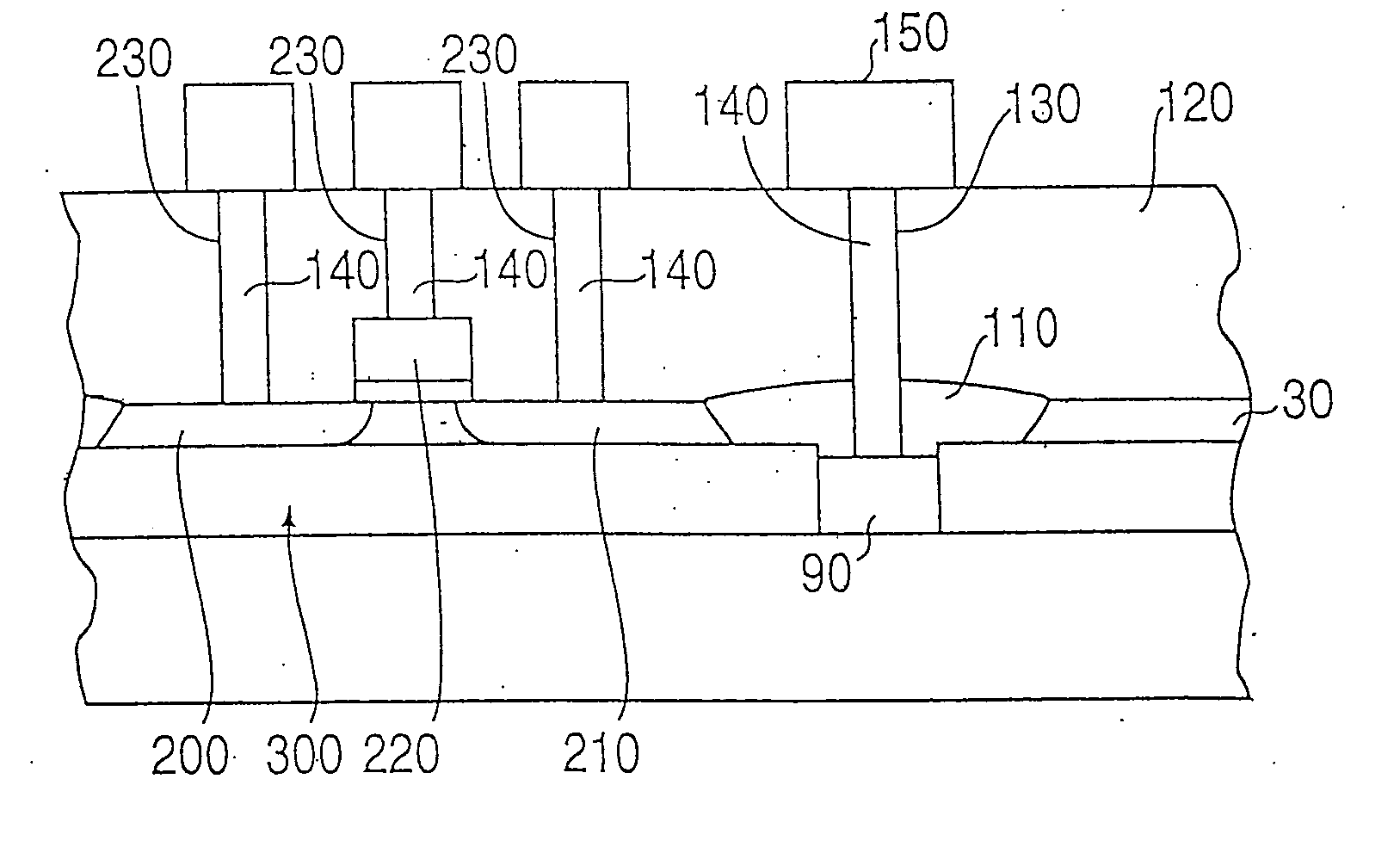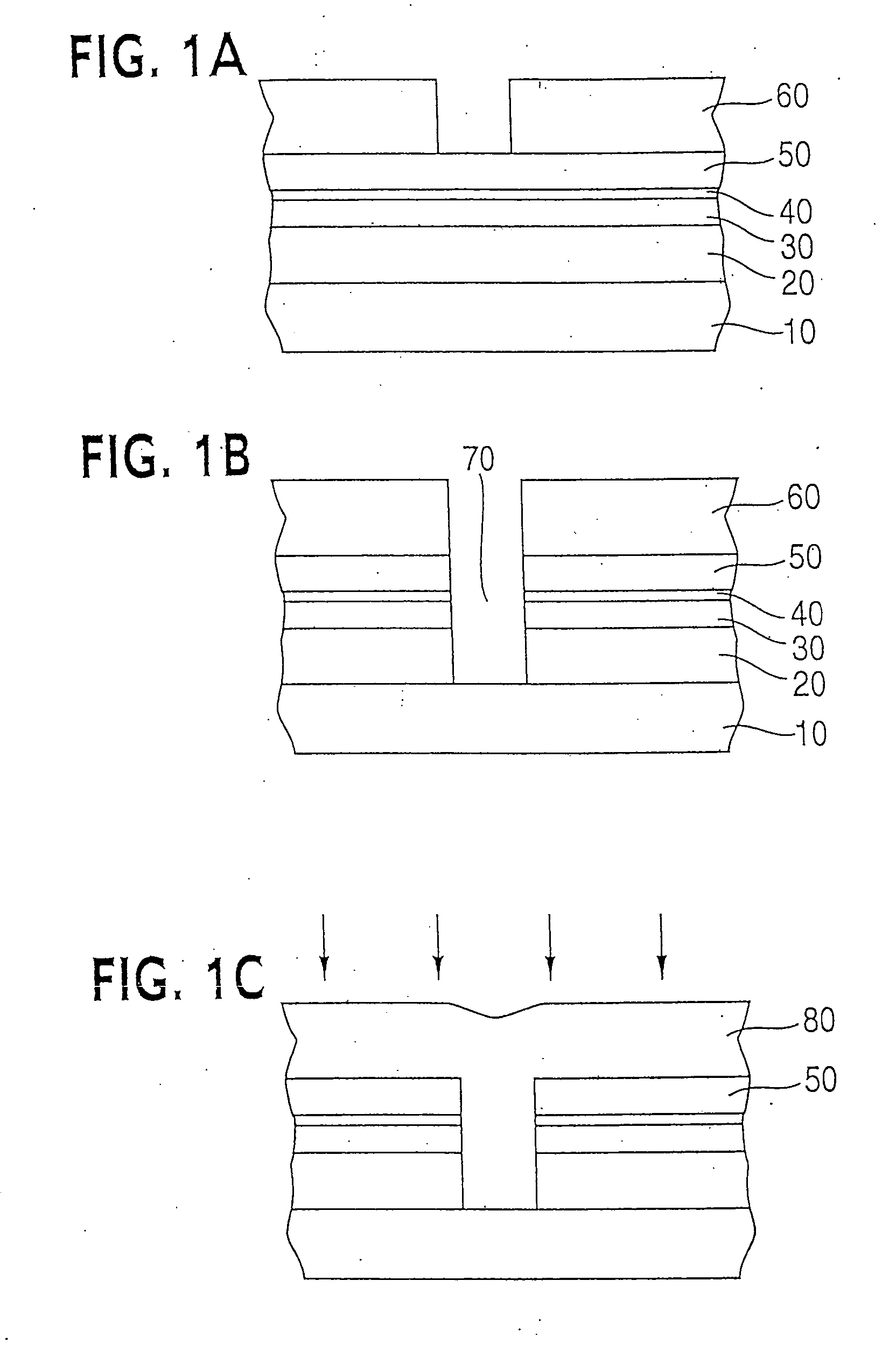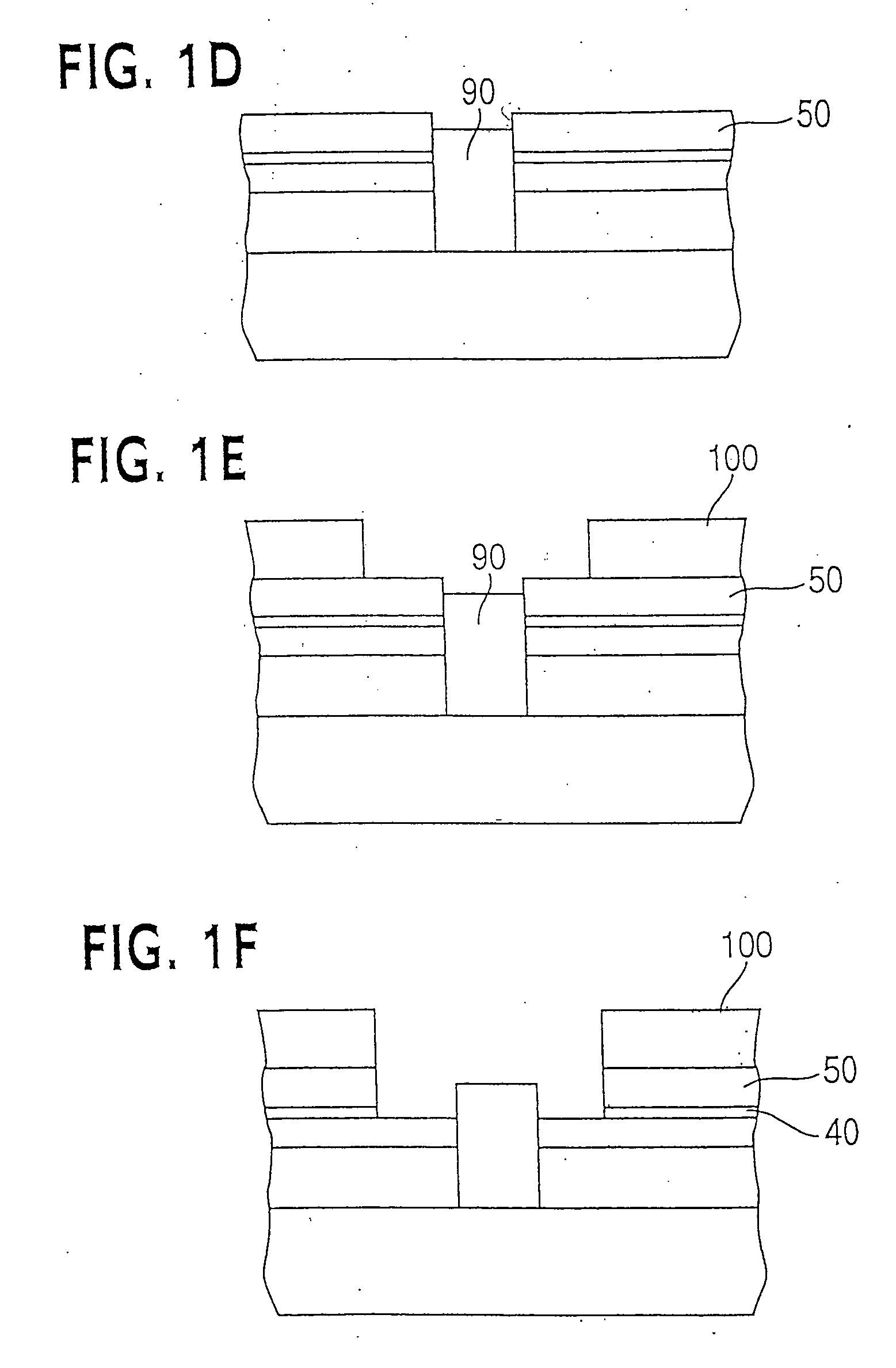Method for forming semiconductor device
a silicon-insulator and fet technology, applied in semiconductor devices, semiconductor/solid-state device details, electrical devices, etc., can solve the problems of parasitic bipolar action, high leakage current of floating body soi devices, and disadvantages of conventional soi transistors
- Summary
- Abstract
- Description
- Claims
- Application Information
AI Technical Summary
Benefits of technology
Problems solved by technology
Method used
Image
Examples
Embodiment Construction
[0018] A method for forming a silicon-on-insulator FET according to a first preferred embodiment of the present invention will hereinafter be described in detail with reference to the accompanying drawings.
[0019]FIG. 1A-FIG. 1I are cross-sectional views showing a method for forming a silicon-on-insulator FET according to a first preferred embodiment of a present invention.
[0020] As shown in FIG. 1A, a silicon-on-insulator (SOI) structure is provided. Examples of the methods to form the SOI structure are called SIMOX (separation by implantation of oxygen) or a bonded wafer. The SOI structure is made up of a silicon substrate 10, an insulating layer 20, and a silicon layer 30. Then, a silicon oxide film 40 and a silicon nitride layer 50 are sequentially formed on the silicon layer 30. Then, a first resist pattern 60 is overlaid the silicon nitride layer 50. The first resist pattern 60 has an opening corresponding to a portion in which is formed a contact hole for a substrate-biasing...
PUM
 Login to View More
Login to View More Abstract
Description
Claims
Application Information
 Login to View More
Login to View More - R&D
- Intellectual Property
- Life Sciences
- Materials
- Tech Scout
- Unparalleled Data Quality
- Higher Quality Content
- 60% Fewer Hallucinations
Browse by: Latest US Patents, China's latest patents, Technical Efficacy Thesaurus, Application Domain, Technology Topic, Popular Technical Reports.
© 2025 PatSnap. All rights reserved.Legal|Privacy policy|Modern Slavery Act Transparency Statement|Sitemap|About US| Contact US: help@patsnap.com



